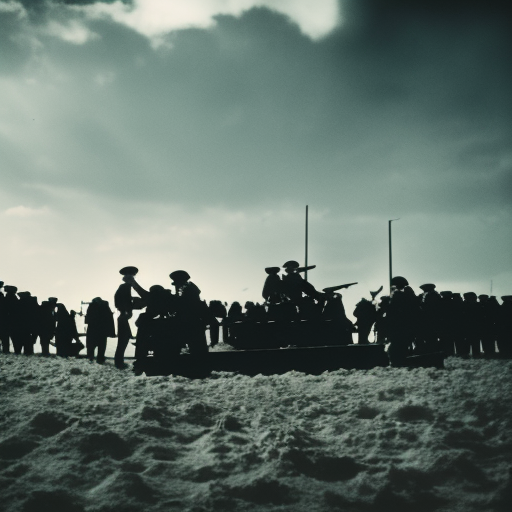Battle of Rijmenam: A Decisive Engagement in the Eighty Years’ War
The Battle of Rijmenam was a significant military confrontation that took place on July 31, 1578, during the Eighty Years’ War. This battle occurred near the village of Rijmenam, located in present-day Belgium. It was fought between the forces of the Spanish Empire, led by Don John of Austria, and the Protestant rebels of the Dutch Republic, commanded by William of Orange.
Background: The Eighty Years’ War was a protracted conflict between the Spanish Empire and the Dutch Republic. The Dutch, seeking independence from Spanish rule, had been engaged in a series of rebellions and uprisings. In 1576, the Dutch provinces formed the Union of Brussels, a pact aimed at achieving religious tolerance and self-governance. However, the Spanish governor, Don John of Austria, sought to suppress the rebellion and maintain Spanish control over the region.
Spanish Offensive: In 1578, Don John launched a military campaign to regain control of the rebellious provinces. He aimed to capture the strategic city of Mechelen, which would provide a gateway to the rest of the Dutch Republic. To achieve this, he assembled a formidable army composed of Spanish, Walloon, and German troops.
William of Orange’s Response: William of Orange, the leader of the Dutch rebels, was aware of Don John’s intentions and quickly mobilized his forces to counter the Spanish offensive. He gathered an army primarily composed of Dutch and German mercenaries, as well as a contingent of Scottish soldiers.
The Battle: The Battle of Rijmenam began when the Spanish forces, numbering around 20,000 men, launched an attack on the Dutch positions. The Spanish cavalry charged towards the Protestant lines, aiming to break their formation and create chaos. However, the Dutch troops, well-disciplined and led by experienced commanders, managed to repel the initial assault.
Counterattack: Sensing an opportunity, William of Orange ordered a counterattack. The Dutch cavalry, supported by infantry, launched a fierce assault on the Spanish lines. The Protestant forces managed to break through the Spanish ranks, causing panic and confusion among the enemy soldiers.
Spanish Retreat: The Spanish troops, demoralized and disorganized, began to retreat from the battlefield. The Dutch forces pursued them, inflicting heavy casualties and capturing numerous prisoners. The Battle of Rijmenam ended in a decisive victory for the Dutch rebels.
Aftermath: The Dutch victory at Rijmenam had significant consequences for the course of the Eighty Years’ War. It bolstered the morale of the Dutch rebels and weakened the position of Don John of Austria. The Spanish were forced to abandon their plans to capture Mechelen, and the Dutch Republic retained control over the region.
Legacy: The Battle of Rijmenam demonstrated the military prowess of the Dutch rebels and their ability to stand up against the powerful Spanish Empire. It also highlighted the importance of effective leadership and disciplined troops in achieving victory on the battlefield.
In conclusion, the Battle of Rijmenam was a crucial engagement in the Eighty Years’ War. The Dutch rebels, led by William of Orange, successfully repelled the Spanish offensive and emerged victorious. This battle had a significant impact on the course of the war, boosting the morale of the Dutch forces and weakening the position of the Spanish Empire. The Battle of Rijmenam serves as a testament to the resilience and determination of the Dutch rebels in their quest for independence.












